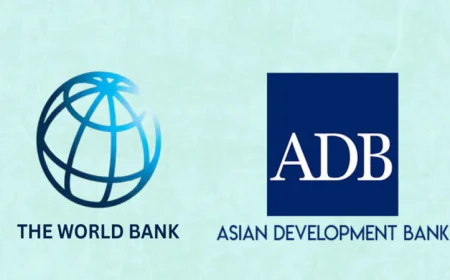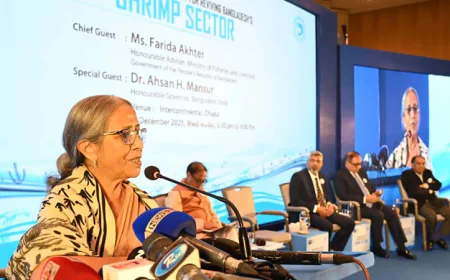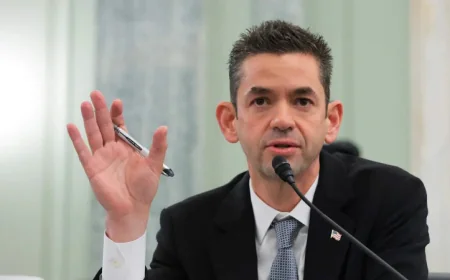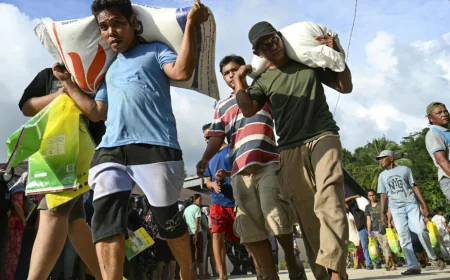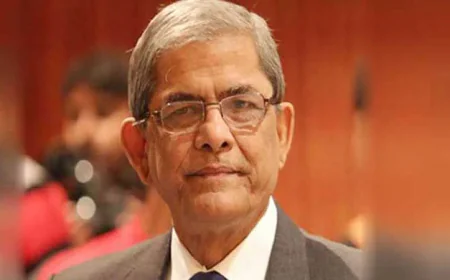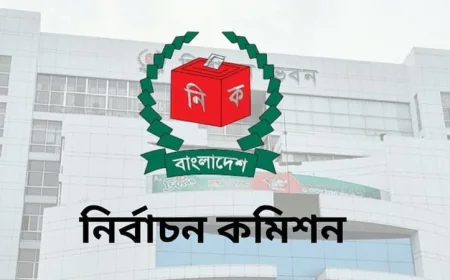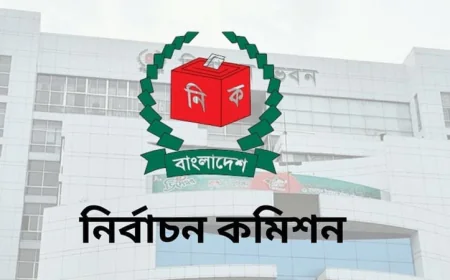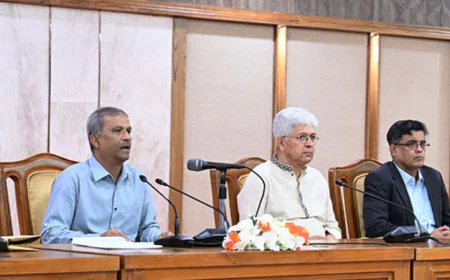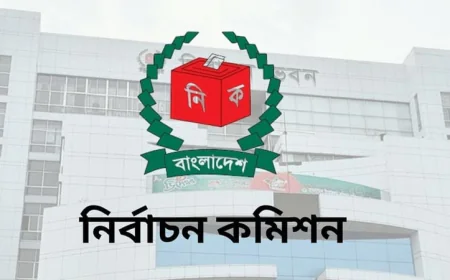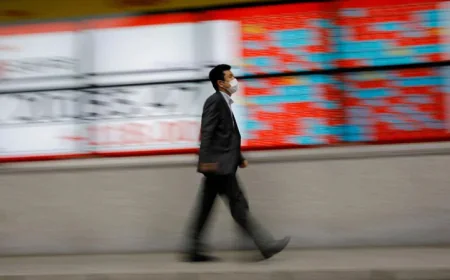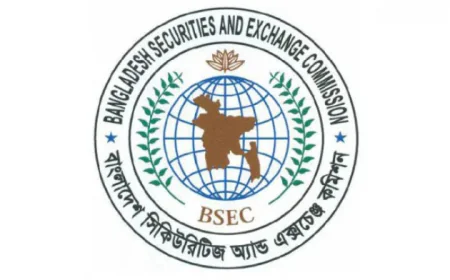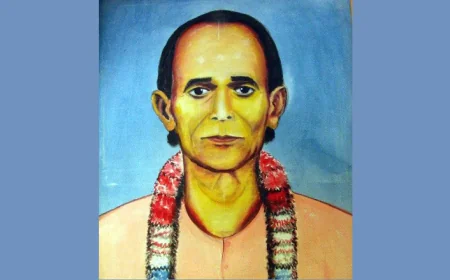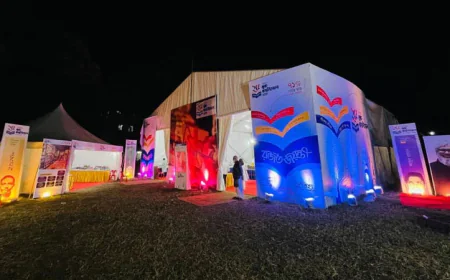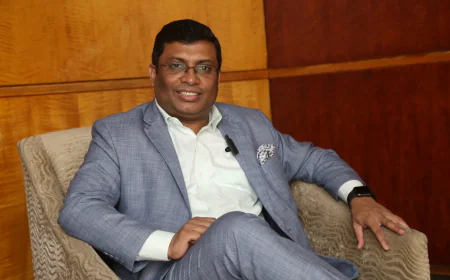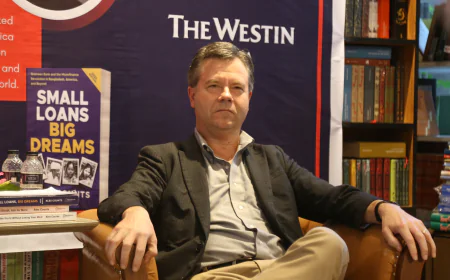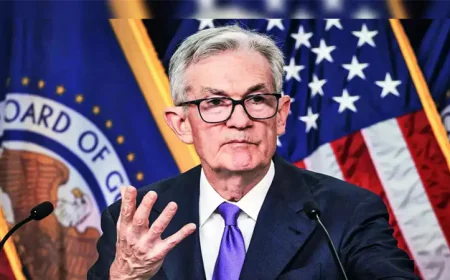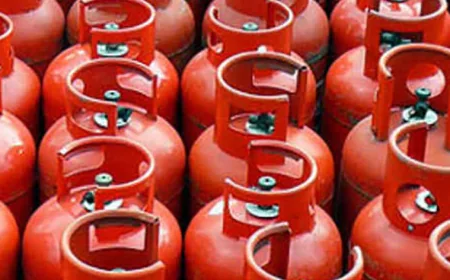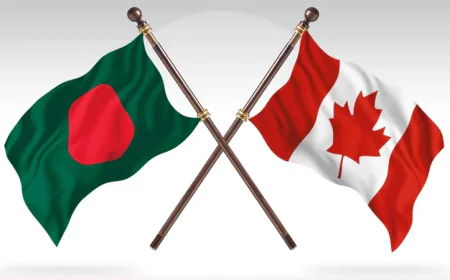Bangladesh’s Future in Focus Amid Political and Economic Strain
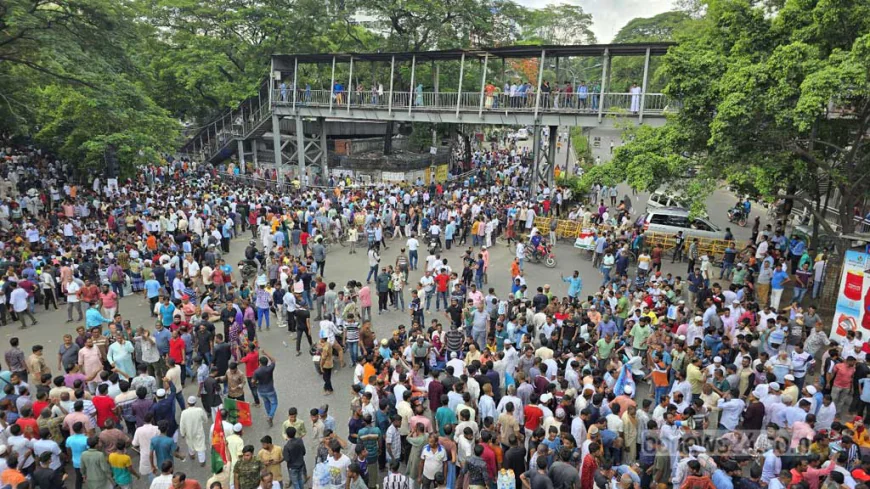
Amid ongoing economic pressures and the lingering effects of the July Uprising, political uncertainty continues to weigh heavily on Bangladesh’s economy as the fiscal year draws to a close. Analysts warn that the government’s ability to revive the economy in the coming year will depend largely on the political stability and the policy measures it outlines in next Monday’s budget. Despite some positive signs in exports and remittances, key challenges remain: high inflation, slumping investment, rising unemployment, a slowdown in foreign borrowing, sluggish development spending, a struggling banking sector, and poor revenue collection.
Economists say these factors could seriously hamper the implementation of next year’s budget. The growing dysfunction within the bureaucracy, triggered by unrest and political agitation, has disrupted trade flows and could, if prolonged, push the economy to a breaking point, some warn. Zahid Hussain, former lead economist at the World Bank’s Dhaka office, told bdnews24.com: “With protests on the streets every day, and the public in distress, this kind of disruption is clearly harmful to the economy. Regardless of whether the demands are justified, people are taking to the streets over almost everything. “Standing in traffic for three to four hours a day like this—it breaks the economy’s knees.”
The ongoing crisis had already taken root during the Awami League’s fourth consecutive term in office, as global headwinds, including the Russia-Ukraine war, exacerbated domestic vulnerabilities. The situation escalated with mass protests in July 2024 over civil service quota reforms, culminating in the Aug 5 uprising and the formation of an interim government. While remittances and exports began to stabilise following the transition, improvements across other economic indicators have remained either slow or stagnant, reflected in downward revisions of GDP growth forecasts. Even 10 months later, daily protests continue to rattle the streets.
From civil service unrest over internal reshuffling, to work stoppages against the Public Service Act, and a prolonged strike triggered by the abolition of the National Board of Revenue (NBR), political agitation is proving a persistent drag on economic momentum. Despite the instability, the interim government is preparing to unveil its first full budget in early June, amid one of the most uncertain fiscal environments in recent memory. Meanwhile, AB Mirza Azizul Islam, former finance advisor to the 2007-08 caretaker government, has called for calm and diplomacy in the face of recent trade tensions with India. He advised the government against retaliatory trade restrictions or “economic warfare” and called for official dialogue with New Delhi, instead, to resolve differences.
A sharp rise in remittance inflows and moderate export growth have helped stabilise Bangladesh’s external balance at a critical moment for the economy, offering a degree of reassurance as the country navigates political and financial uncertainty. The latest data from the Bangladesh Bank shows that the combination of sustained export earnings, improved remittance inflows, and steady foreign loan disbursements has kept the country’s foreign exchange reserves at a relatively secure level. Despite earlier concerns, the situation now suggests no immediate risk to reserve adequacy.
The key driver behind this recovery has been a resurgence in remittances, including a record single-month inflow. During the mass protests of July-August 2024, many Bangladeshi migrants in the Middle East withheld remittances in solidarity with domestic movements. Following the political transition in August, these funds were released all at once, contributing to monthly remittances surpassing $3 billion. As a result, reserves have consistently stayed above the $20 billion mark in recent months.
According to the central bank, between mid-April and the end of the month, the reserves surged by $1 billion in just 13 days. On Apr 30, reserves exceeded $22 billion, the highest in 19 months—under the BPM6 accounting standard set by the International Monetary Fund (IMF). Although recent debt repayments have caused a slight dip, reserves remained around $20.5 billion as of May 24, well above the $18.5 billion recorded on the same date last year. Remittance inflows reached historic highs in March and April, with March coinciding with Eid ul-Fitr, bringing in $3.29 billion, the highest ever recorded in a single month.
April followed as the second-highest month, with a 34.8 percent year-on-year increase. In April 2024, migrant workers sent just under $3 billion through formal banking channels, compared to $2.04 billion in April 2023, according to Bangladesh Bank spokesperson Arif Hossain Khan. So far in the current 2024-25 fiscal year, Bangladesh has received approximately $25 billion in remittances through official channels-on track to surpass previous records. Previously, the highest annual remittance inflow was $24.77 billion in FY2020–21.
According to Zahid, the recent surge is partly due to a resumption of withheld remittances by expatriates who had shown moral support for the mass protests. On top of that, better oversight and improved banking mechanisms have helped curb illegal outflows, supporting the rise in official remittance channels. For the first time in 26 months, Bangladesh recorded its lowest inflation rate in April, with overall inflation falling to 9.17 percent -- the lowest since February 2023, when it stood at 8.87 percent. Updated data from the Bangladesh Bureau of Statistics (BBS) shows that in April, expenses declined across both food and non-food sectors in urban and rural areas. Although the government also reported a notable drop in inflation this February, that decline was limited to food prices alone.
While this latest figure offers a glimpse of hope, concerns remain over how long the downward trend in non-food inflation can be sustained. In February, inflation eased, only to climb again in March. Economist Azizul has voiced fears that persistently high inflation could further erode the living standards of the country’s poor. He also reminded that inflation takes a toll on the banking sector. “The major challenge for the economy right now is inflation,” said the former finance advisor. “It has eased slightly, but it's still above 9 percent. “When inflation is this high, it creates several problems -- one of them being that people lose interest in keeping their money in banks.
“If the interest earned on savings is lower than the inflation rate, depositors are effectively losing money. In real terms, you're eroding your capital. This puts pressure on the banking sector.” Bangladesh Bank chief Ahsan H Mansur, however, remains optimistic. He recently said that inflation could be brought down to below 5 percent by the end of this year. According to him, the target is to reduce inflation to between 3 and 4 percent. By August, the aim is to bring it below 7 percent, and down to 8 percent by June. The central bank hopes to reach under 5 percent by the year’s end or early next year. But economist Zahid Hussain has questioned the effectiveness of the current contractionary policies in place to reduce inflation.
“Inflation remains extremely painful, especially food inflation,” he said. “For low-income and poor people, it’s becoming unbearable. “The recent drop in inflation is not enough to celebrate --especially since there’s no guarantee this trend will continue.” He also stressed that unchecked extortion and repeated handovers of goods along supply chains are driving up prices unnecessarily. “If that could be addressed, we wouldn’t have to maintain high interest rates for so long.” Zahid argued that the cost of distribution has far outpaced production costs, indicating multiple handovers and middlemen profiting at each stage --all of which drive up retail prices. “If you add extortion into the mix, and if it’s happening at every level, the final price of goods will obviously soar,” he said.
The political agitation in July and August last year cast a shadow over foreign direct investment (FDI) in the first quarter (July–September) of the current 2024–25 fiscal year. Signs of recovery, however, appeared in the second quarter (October–December), according to official figures. During this period, the total stock of FDI reached $18.29 billion, up from $17.83 billion in the same quarter of the previous fiscal year -- a modest increase of 2.58 percent year-on-year. Yet data from the Bangladesh Bank shows a stark decline in net FDI inflows. Between July and December this fiscal year, net FDI stood at just $490.4 million -- less than half the annual amounts seen in recent years.
Last fiscal year, Bangladesh received $1.41 billion in net FDI. In 2022–23, it was $1.6 billion; in 2021–22, $1.71 billion; in 2020–21, $1.32 billion; and in 2019–20, $1.2 billion. The Bangladesh Bureau of Statistics (BBS) has meanwhile estimated that GDP growth this fiscal year has dipped below 4 percent -- a rare slump reflecting the wider slowdown in domestic investment. Adding to this concern, the downward trend in private sector credit growth points to shrinking business activities and investment appetite. BBS’s provisional data shows GDP grew by just 3.97 percent -- the lowest in two decades outside the exceptional circumstances of the COVID-19 pandemic, when growth dropped to 3.51 percent in 2019–20.
Private credit growth also has not bounced back since the political unease. Although there have been fluctuations, the sector has largely remained stagnant over the last nine months. In March, private credit growth inched up to 7.57 percent from 6.82 percent in February --marking five straight months of staying below the 8 percent mark. The last time such low growth was recorded was in May 2021, amid the COVID crisis, when it stood at 7.55 percent. The twin challenges of high inflation and sluggish investment are also fuelling unemployment.
According to BBS, 2.66 million people were unemployed in the first quarter of this fiscal year, up from 2.49 million a year earlier — a year-on-year increase of 170,000. Media reports based on BBS’s quarterly survey also show the jobless population rose to 2.703 million in the second quarter (October–December). Economists Azizul and Zahid say political “instability” -- particularly uncertainty around elections -- is keeping investors on the sidelines. “Political parties expressing divergent positions have created an uncertain atmosphere for investment,” said Azizul in an interview with bdnews24.com. “In such an environment, private sector investment doesn’t rise. So we need to find ways to reduce this uncertainty,” he said.
Echoing this view, Zahid added that in politically unstable conditions, businesses are more likely to “hold on to their money” than make new investments. When Yunus took over as the chief advisor of the interim government, there were expectations that his global reputation would help boost foreign investment. Private appointments in relevant sectors added to that hope, and many believed foreign loans and aid might also increase. But nine months into the current fiscal year, those hopes have not materialised. No sign of rising investment, loan disbursement is on a downward trend, and fresh loan commitments have been meagre.
What has risen sharply, however, is the pressure of repayments. From July to March of the 2024–25 fiscal year, Bangladesh received $4.81 billion in foreign financing — down 14.61 percent from $5.63 billion during the same period a year ago. This funding includes both loans and grants intended for development project implementation. Even new loan commitments have plummeted. Over the first nine months of the current fiscal year, fresh commitments stood at only $3.05 billion -- a staggering 58.5 percent drop from $7.24 billion received during the same period last year. Repayment obligations have climbed steeply. Although the government has borrowed less, repayments on earlier loans have surged by 21.4 percent, reaching $3.12 billion -- equivalent to Tk 386.82 billion in local currency.
Of this amount, $2.01 billion was paid as principal and $1.2 billion as interest. In contrast, during the first nine months of the previous fiscal year, total repayments amounted to $2.57 billion — or Tk 282.61 billion. ADP IMPLEMENTATION HITS 15-YEARS LOW The interim government has initiated a review of development projects undertaken during the previous Awami League tenure, halting several that were approved on “political considerations”. In addition, the dismantling of the former administration has caused delays, as many project directors—mostly bureaucrats--are no longer in place. The same challenge applies to several private firms previously tasked with implementation. As a result, the Annual Development Programme (ADP) implementation remained sluggish throughout the first ten months of the current fiscal year. According to the Implementation Monitoring and Evaluation Division (IMED), the revised ADP execution stood at 41.31 percent as of April, significantly lower than the 49.26 percent recorded in the same period last year.
IMED data shows this is the lowest implementation rate in 15 years. Due to the absence of earlier public records, there is concern that the actual gap could be even wider. Planning Advisor Wahiduddin Mahmud said the reduced implementation was expected, as the budget itself had been downsized and multiple projects were being reassessed, trimmed, or discontinued. “Contractors have left, project directors are gone--it’s taken time to restart everything. Where there was waste, we’ve made corrections. That’s also slowed the pace,” he added. The government has slashed Tk 490 billion (18.49 percent) from the original ADP allocation, bringing it down from Tk 2.65 trillion to Tk 2.16 trillion.
Mustafizur Rahman, distinguished fellow at the Centre for Policy Dialogue (CPD), said even with the cuts, timely implementation and prioritisation of near-completion projects must be ensured. “Development spending must be efficient and well-governed. Focus should be on finishing what’s nearly done and prioritising ongoing projects,” he said. He added that ensuring “quality” implementation of the current and upcoming fiscal year’s ADP would remain a major challenge for the government. Despite early pledges to break from past fiscal practices, the interim government has continued injecting liquidity into banks by printing money--just as the previous administration did--despite saying it would avoid this route.
In a shift from appointing bureaucrats as Bangladesh Bank governors, the government named economist Mansur to the role, aiming to restore discipline in the struggling banking sector.Soon after taking office, Mansur halted liquidity support to banks linked to Awami League-affiliated S Alam Group. This triggered a liquidity crunch in several Shariah-based banks, prompting widespread rumours of collapse and a rush by depositors to withdraw funds. To ease the crisis, Bangladesh Bank disbursed Tk 225 billion in liquidity support to six banks in November 2024. At the time, the governor admitted the funds were printed, but argued the central bank was using Bangladesh Bank bills to mop up excess money, mitigating inflation risks.
Still, repeated liquidity injections signal ongoing distress in the sector. Now, a plan is under way to merge six weak banks into one entity under state control. Channel 24 reported the merger will be completed by July, after which the government will seek foreign investors for the unified bank. Efforts to recover funds looted from banks and laundered abroad have shown no tangible success. Despite repeated assurances from the government and Bangladesh Bank, no concrete results have materialised. Mirza Azizul called the recovery process “extremely difficult,” noting that laundered money typically lands in foreign bank accounts, and without court orders in those jurisdictions, repatriation is nearly impossible.
Echoing this, Zahid said international data suggest only 1 percent of laundered money is ever recovered. “What’s gone is almost gone. The process is long and uncertain. Preventing future outflows should now be the top priority,” he said. Unrest in July–August and ongoing political turmoil have sharply disrupted revenue growth. Despite high inflation, a shaky investment climate and an overall economic slowdown have pushed the revenue shortfall to over Tk 650 billion in the first nine months of the current fiscal year. With three months of data still pending, National Board of Revenue (NBR) officials fear the deficit could cross Tk 1 trillion.
Zahid noted that under the current circumstances, collecting even Tk 4 trillion would be a “noteworthy achievement”. To absorb political and economic shocks, the government had already revised down its revenue target from Tk 4.8 trillion to Tk 4.63 trillion. The NBR then set monthly collection goals, but by the end of March, collections had fallen short by Tk 656.66 billion. The IMF expects Tk 4.55 trillion to be collected in this fiscal year.
That would require over Tk 660 billion per month in the final quarter--almost double the average monthly collection of around Tk 285 billion recorded so far. To close the gap, Zahid recommends a stronger crackdown on tax evasion. Despite raising duties, VAT, and other taxes on over 100 products midway through the fiscal year, collections did not increase significantly. Economist Mostafizur suggests prioritising direct taxation over indirect taxes.
He stressed expanding the tax base without harassing current taxpayers. “In this inflationary period, we should focus on raising income and corporate taxes in a way that provides relief--not pressure--to people already in the tax net,” he said. Mostafizur also emphasised boosting online tax payments and digitalisation to widen the tax network.
